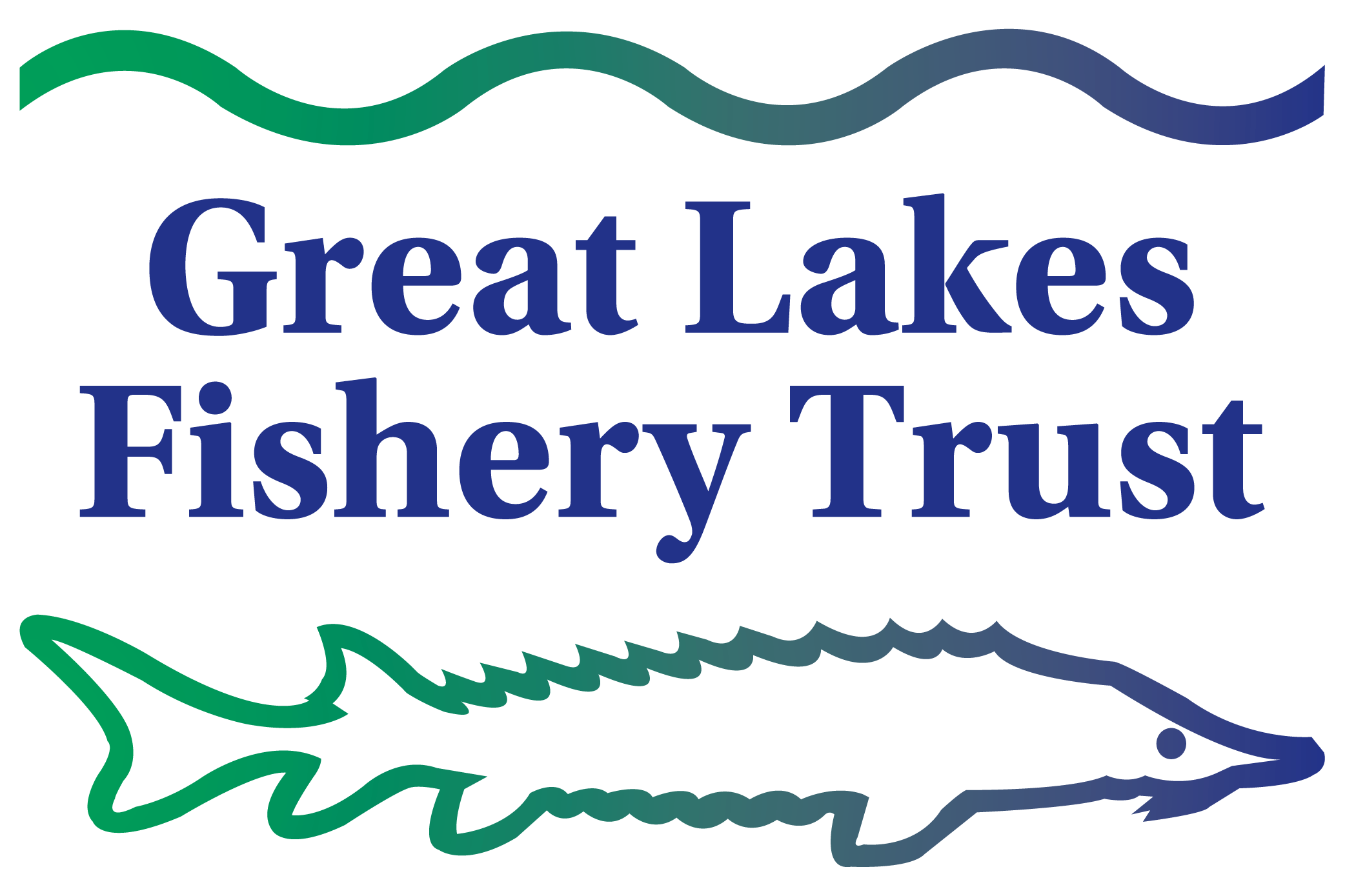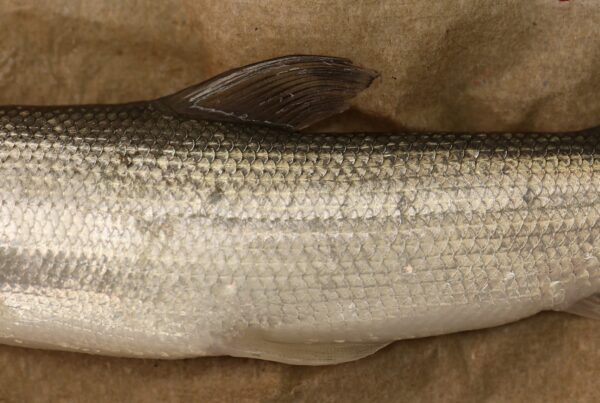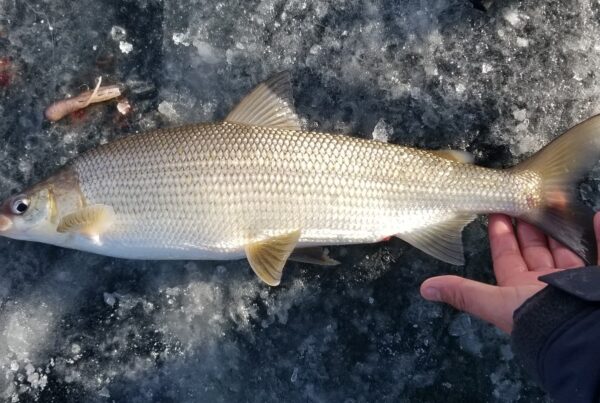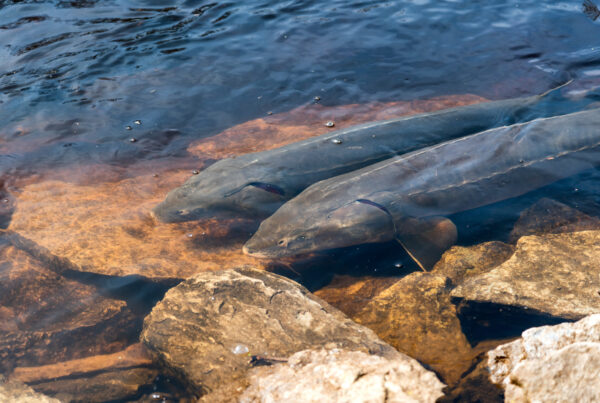Dr. Catherine Riseng, Assistant Research Scientist at the University of Michigan
Dr. Riseng worked with a team to develop the Great Lakes Aquatic Habitat Framework (GLAHF), a database used to classify habitats for different species within the Great Lakes basin. The GLAHF was developed over the course of four years. It is currently in its last year, with plans to maintain the database going forward.
The GLAHF was designed as a way to classify habitats throughout the Great Lakes basin and includes spatial data such as biological populations, agricultural census, water temperature, ice cover and more. How will it be used and who will be its primary users?
Researchers will be able to use the spatial data as input for their projects. They can also look at how their data matches up with what’s already in the GLAHF. Management agencies could look at habitat statuses, or where sampling locations are. If agencies are monitoring the Great Lakes at different locations, the GLAHF database would be a good place to see where other agencies are monitoring, where there are gaps, and where they can plan new monitoring efforts accordingly.
Why is it important to have this kind of classification and framework for the Great Lakes?
There’s nothing out there that can be used to link all of the different geographic information systems (GIS) projects, research, and monitoring together in one place. The GLAHF allows people to see all the data that’s out there and use it to better guide restoration or management planning and monitoring. The GLAHF is a special framework that can link data from different projects. There really has been no basinwide classification for the Great Lakes that’s been done so far. It has been done for individual lakes, but not for the whole basin.
The GLAHF is binational, which is another thing that makes it unique. It covers both the U.S. and Canadian side of the basin.
Considering bicoastal coordination can sometimes be difficult to manage, how did the GLAHF team engage Canadian resource managers?
That’s been an effort of ours all along. We’ve been incorporating representatives from Canadian agencies and universities as part of our advisory team, and integrating binational perspectives through meetings and workshops. We’ve also been engaged with binational teams leading two of the Great Lakes Water Quality Agreement 2012 Annexes, which make sure the United States carries out its commitment under the agreement. There are ten annexes within the agreement and each one focuses on specific issues.
We work hard to incorporate input from agencies managing both sides of the border to ensure that GLAHF is relevant binationally. We also recognize the sampling programs, data management, and data sharing policies vary within agencies, but also across the border. We’ve been working through some of those barriers.
What is the plan for ongoing GLAHF maintenance?
Right now GLAHF is housed within the Institute of Fisheries Research at the Michigan Department of Natural Resources (DNR). The DNR has also supported one part-time person to continue to update and maintain the data. I think we are still looking for additional support from federal agencies to help with adding more data and increasing GLAHF’s functionality in the future.
You recently had a manuscript on the GLAHF published in the Journal of Great Lakes Research. What else are you doing to promote the tool?
We present at academic conferences. At these, we host workshops to familiarize attendees with the framework, the data, and the Web-based tools we have been developing. We also host monthly webinars to keep all of our project advisers up to speed and get feedback on project developments. We are currently completing the GLAHF website, which describes the project and the various components, provides access to the framework and data, and has links to the metadata and decision-support tools being developed under U-M Water Center funding.
GLAHF funding is in its fourth and final year. What are you doing with the time you have left?
We are developing a website that will have a user interface within the GLAHF database. We’re going to share the results and actively get feedback from the people demonstrating the website in a hands-on fashion. We’ll also be holding a couple of workshops—one in the U.S. and one in Canada—with the same purpose, but it will be a lot more hands-on. We have a couple of other manuscripts coming out; one looks at spatial variation in water temperature and ice duration. It will demonstrate how the GLAHF is used for additional research in order to investigate the effects of climate change.
What else do you have in store for the GLAHF?
We have two spinoff projects from GLAHF. One is to develop a user interface decision-support tool. The other is a project we started with the Great Lakes Basin Fish Habitat Partnership, where we do an assessment of nearshore habitat using the GLAHF framework.
